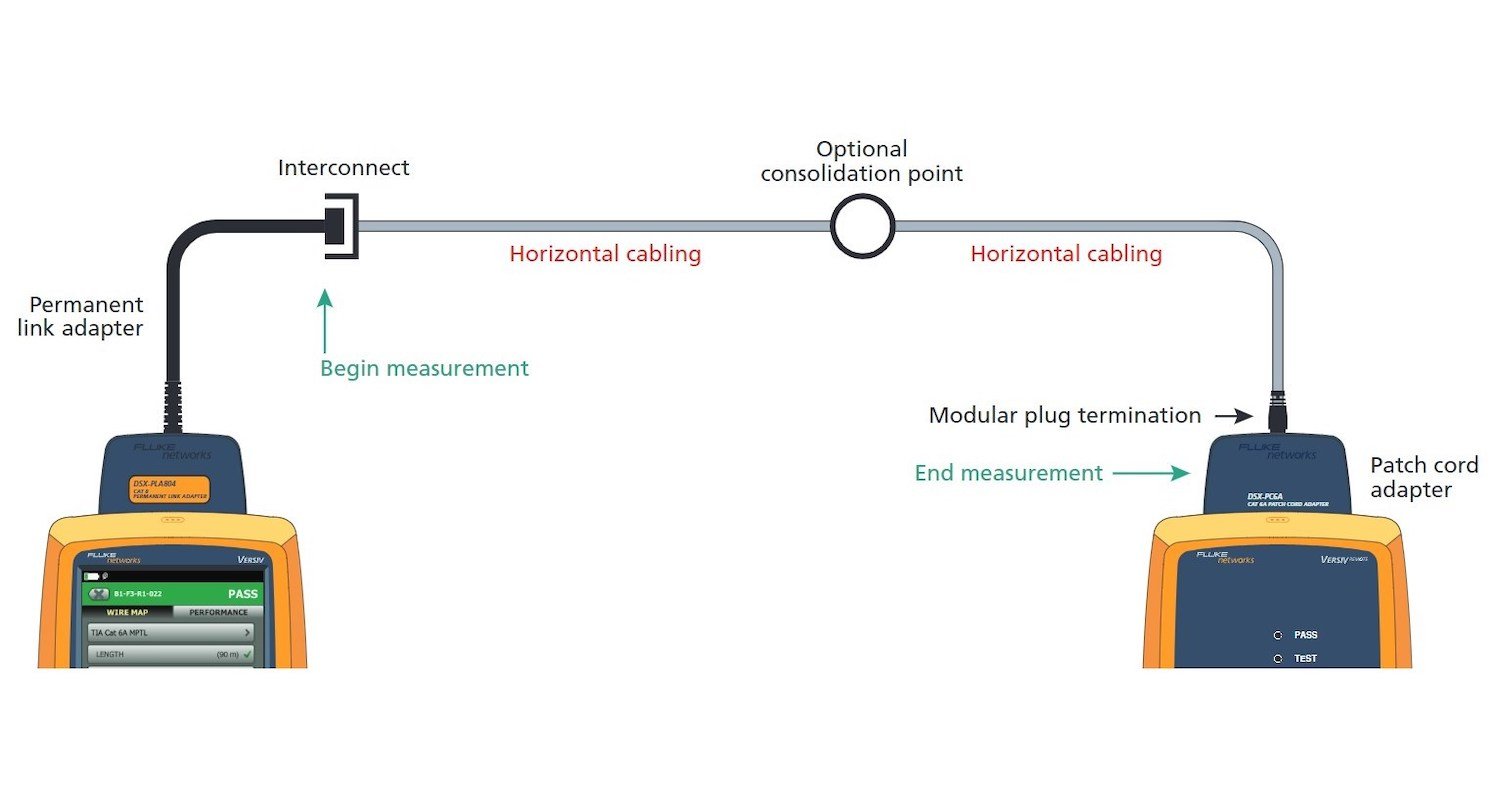MPTL을 테스트하는 올바른 방법은 무엇입니까?
2023년 8월 22일 / General, Installation and testing, Best Practices
You have just received a job specification that includes Modular Plug Terminated Links (MPTLs), with the requirement that all links, including the MPTL, be certified to TIA or ISO standards. This means the customer or manufacturer will look for test reports with “MPTL” as the test limit.
To get a LinkWare™ report with “MPTL” on it, you must run the test with a DSX CableAnalyzer™ Series tester using a Permanent Link Adapter (PLA) on one end and a Patch Cord Adapter (PCA) on the other. 왜 그렇습니까? The short answer: it is what the standards require.

MPTL is a Recognized Connection Option
More than five years ago, TIA 568 industry cabling standards officially recognized the MPTL as an option for connecting devices where it was deemed impractical or unsafe to deploy an outlet or equipment cord. It is now included in the ANSI-TIA 568.2-D and defined in the ISO/IEC Technical Report 11801-9910. The MPTL has become common for connecting everything from PoE lights and surveillance cameras to Wi-Fi access points.
Long before the MPTL made its way into industry standards, installers were terminating horizontal cable to RJ-45 plugs and connecting directly into a device. They just didn’t call it MPTL. The application was first documented in the BICSI 005-2016 Electronic Safety and Security standard as a modified one-connector permanent link. Over time, however, more than the name has changed; industry standards have also added a new and better way to test MPTLs.
Testing an MPTL with a Channel Adapter Is Unreliable
When the concept of terminating a horizontal cable to a plug for direct connection to a device was introduced, BICSI recommended testing this configuration with a modified one-connector permanent link testing method. The technician would attach the main testing unit to a PLA at the near end and attach the remote unit with a channel adapter at the far end.
Testing a link terminated to an RJ-45 via a modified single-connector permanent link and a channel adapter at the far end excludes the mated connection at the far end from the test — so this testing method is unreliable and not representative of the entire link. It leads to optimistic results with a lot of headroom that can potentially overlook any poor termination practices of the far-end plug connection. The risk is that a link will not function properly once a device is connected.
Recognition of the MPTL in industry standards created the need for a new, more accurate test method. To include the final plug connection when testing, TIA 568.2-D standards recommend using a PCA at the far end rather than a channel adapter, as shown below. ISO/IEC TR 11801-9910 also describes this test method in Clause 8. (For the details on performing this test, check out this Fluke Networks Knowledge Base article.)

TIA 568.2-D and ISO/IEC TR 11801-9910 standards both recommend using a PCA at the far end (right) rather than a channel adapter.
Is Using a PCA Actually Required by the Standards?
The short answer is yes, a PCA is what the standards require.
PCAs are typically used for patch cord testing, with one attached to the main testing unit and another to the remote end. Because not every installer does patch cord testing and has a PCA on hand, some manufacturers still accept the old way of testing an MPTL with a PLA at the near end and a channel adapter at the far end. To include the connection to the device in this alternative test method, however, manufacturers typically require using a specific field-terminated plug test cord with a modular plug on one end and a jack on the other. The problem is that the standards committees have determined that test reference cord quality still causes optimistic results that can lead to potential failures.
Regardless of what a manufacturer will accept, industry standards do not allow testing an MPTL without a PCA. At Fluke Networks, we follow the standards, and therefore we cannot report a test performed without a PCA as an “MPTL.”
Not everyone tests patch cords frequently and has a PCA on hand, so we have made it more affordable by offering single PCAs in addition to selling them in pairs. For accurate measurements, note that the adapter must match the category/class of the link you are testing (for example, Category 6A / Class Ea). Of course, we also added the MPTL test limits into our DSX Series Certification testers.
If you are testing MPTLs on a regular basis (which most installers today are), it is well worth investing in a PCA — you will avoid the risk of a non-functioning link once your customer plugs the horizontal cable into their device, or having your test results rejected by your customer.






